Ownership In Traditional Industries
In many traditional industries, such as automotive, many people along the supply chain have to collaborate to create the end product.
If these companies are well managed, each worker is committed not only to the quality of their own contribution – perhaps a piece of sheet metal, but also to ensure smooth integration with neighbouring parts. He is able to explain what functions his part enables and what will happen if the part breaks.
In many cases, the worker is also downright proud of the resulting car and feels responsible for the utility value for the customer.

What is Ownership
The small example from the automotive industry shows that the success of a complex end product depends on everyone who works on it and that it is a worthwhile goal that employees take personal ownership.
In this context, ownership means not only delivering good quality, but also thinking about improvements, proactively pointing out problems and obstacles and helping to solve them. It also includes thinking at all levels of a product organisation, from the preliminary products to the end product and the impact on society.
When the employee takes ownership, he shows the will to make the product a success under all circumstances.

Agile Transformation Weakens Responsibility For The Common Good
Over the past decade, many companies have initiated an agile transformation, which has led to the fragmentation of IT organizations into individual teams.
We have observed that within individual teams there has been an increase in personal responsibility, improved productivity and better quality.
But we are also seeing a sharp decline in responsibility for effects that occur outside the team. This effect makes it more difficult to successfully launch large initiatives.
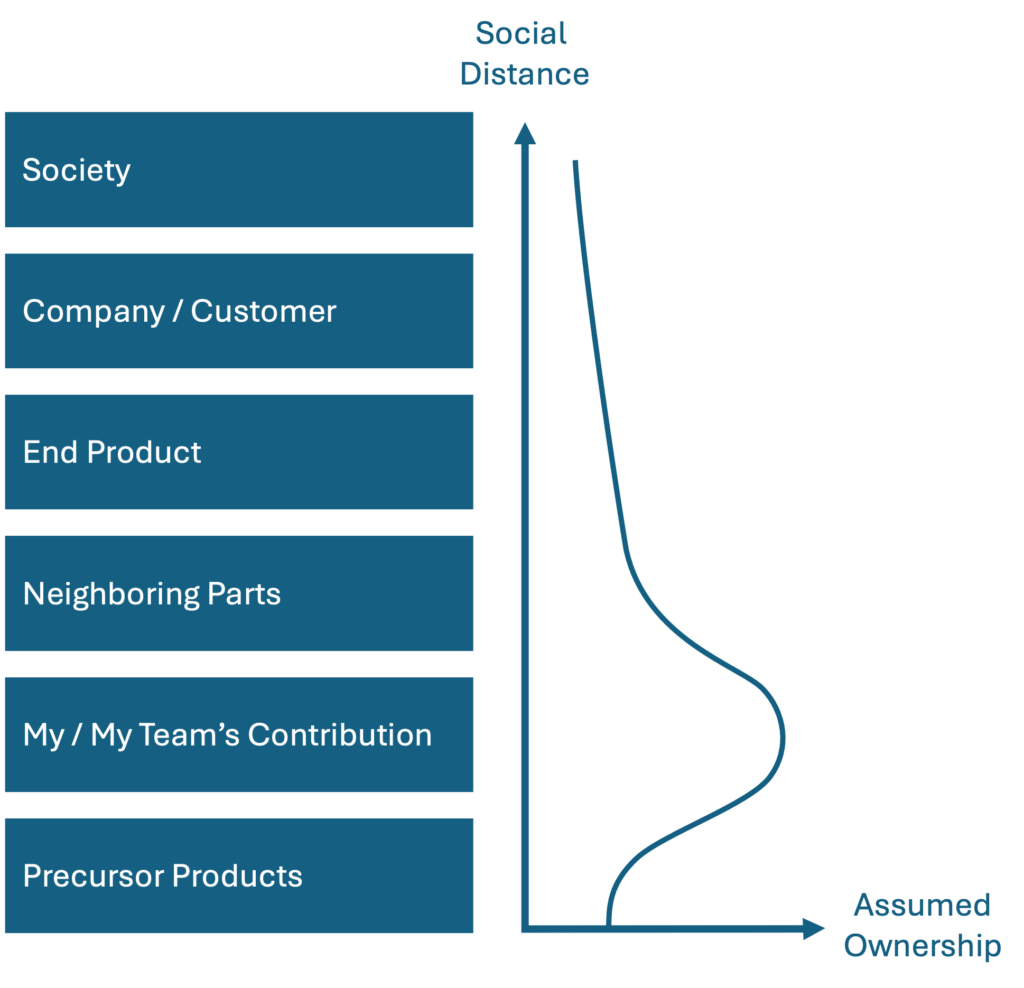
Cross Team Initiatives Suffer From Alienation
The strong focus on the agile team leads to less visibility of the individual which in turn strengthens anonymity and distance instead of ownership for the end product.
The effect is greater the further away the employee is from the end product. This is exactly what we saw at the beginning of the 20th century with the introduction of assembly line work.
So, the logical next step for an agile organization is to bridge the distance to the end product and the customer.
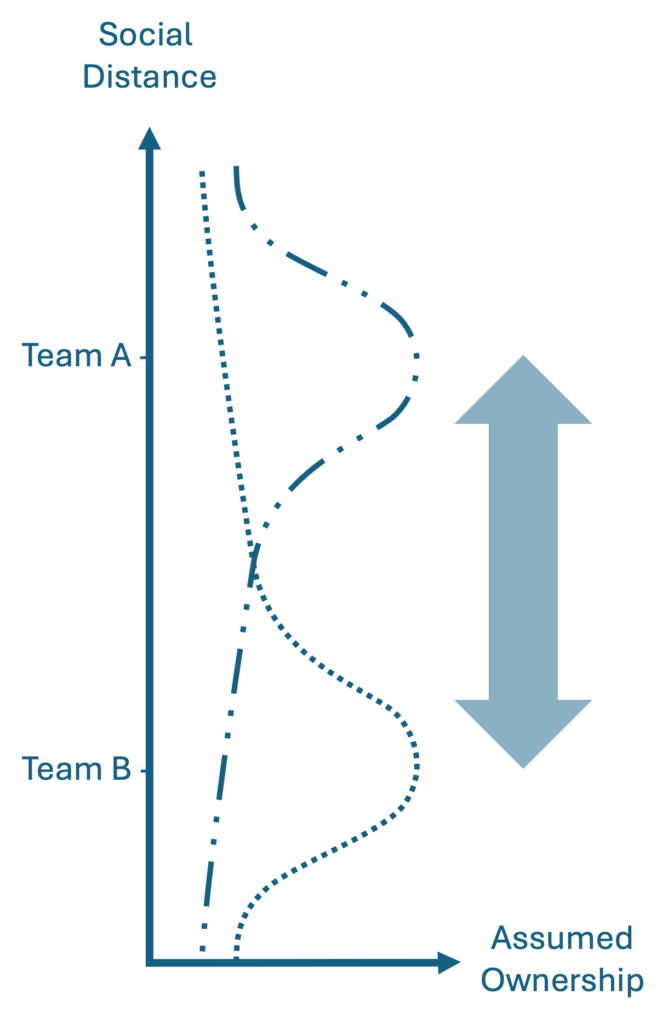
What Are The Indicators In Practice?
The individual reasons for the decreasing responsibility for large scale initiatives are diverse.
The private situation of each individual, their position in the team or excessive workload can play a role. Likewise, a possible rejection of the company strategy or a new product. Sometimes it’s simply due to disorientation in the complexity of the company and its initiatives.
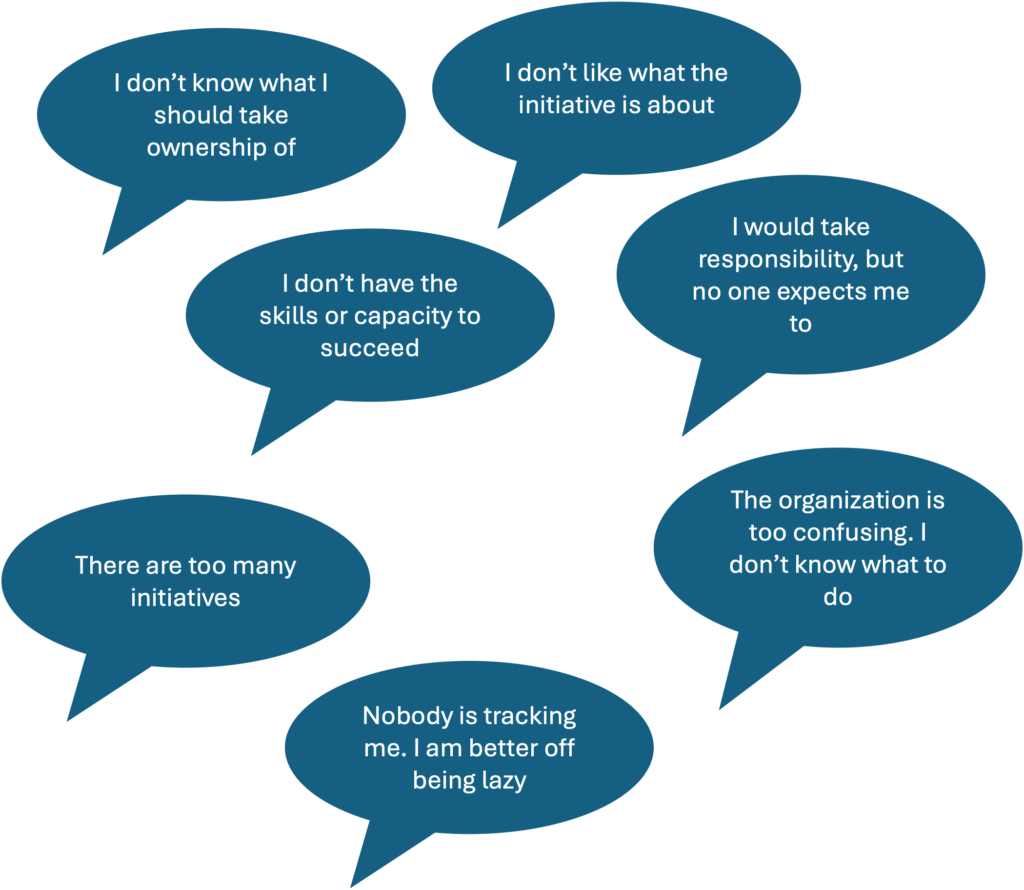
Delivery Team Members Cannot Take Ownership
Beside the situation of the individual there are also structural issues which hinder teams taking ownership.
A lot of roles are involved in the organization. This creates a lot of interactions, and a lot of information is lost between the first link in the chain and the last.
This means that a team never has all the information it needs to understand the importance or the context of the functionality it has to contribute.
In this situation, the employee cannot take responsibility for the success of the initiative. This leads to dissatisfaction and a withdrawal into the team, which he understands better.

Management Members Are Desperately Seeking For Ways To Take Ownership
In summary, ownership is an important aspect in creating complex end-products. The agile transformation provides a flawed foundation for ownership as A) the once centralised vision is now scattered in specialised teams and B) no one has complete information anymore to potentially create a holistic vision. After all, the sponsor is too far away from the delivery to be able to exert an effective influence.
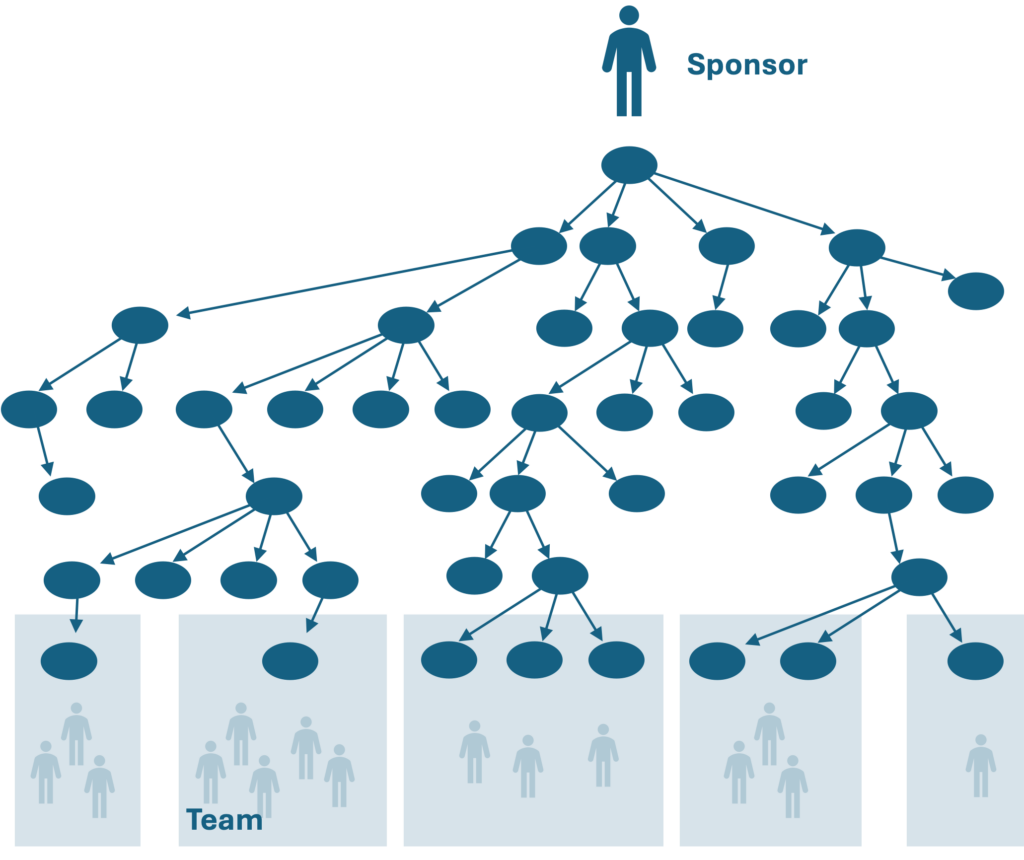
- Jürgen Hemmer
Architecture, DTS Hemmer GmbH
Related Content

Vision & Purpose
North Star Of Large-Scale Initiatives Almost Invisible (Coming Soon)
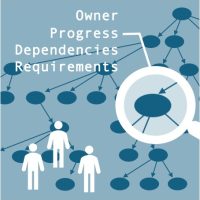
Transparency
Navigating The Fog Of Complex Organizations
(Coming Soon)

Manoeuvrability
Once Initiated, Projects Are Difficult To Control
(Coming Soon)
